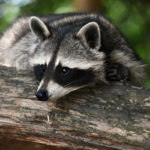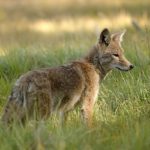The gestation period in animals is the time between conception and childbirth. It varies wildly between different species of animals, and even between different breeds of the same animal. For example, the gestation period of a mouse is only about 20 days, while that of an elephant is nearly two years!
But what about birds? How long is the gestation period for birds?

Do Birds Have A Gestation Period?
Technically, no. The word “gestation” refers to the development of a mammal inside its mother’s womb. However, because birds lay eggs and the embryos develop inside them, the term “gestation period” is not really applicable.
Additionally, it doesn’t necessarily mean an egg is fertile when birds lay eggs. This can be due to physiological factors or genetics like insufficient or defective sperm. At times, fertilization doesn’t begin even after two days of the parent bird sitting on them.
The process of embryonic development inside an egg is called “incubation”. So, the more accurate question would be: How long is the incubation period for birds?

How long is the incubation period of a bird’s egg?
The incubation period of a bird’s egg is the time between when the egg is laid and when it hatches. This period can vary greatly depending on the species of bird, with some eggs taking as little as two weeks to hatch, while others may take up to six weeks.
Small birds like songbirds and fledge typically take 10 to 2 weeks to hatch, while larger birds like woodpeckers take 3 to 4 weeks during incubation. The female bird will keep the eggs warm by sitting on them. She will also turn the eggs regularly to prevent them from sticking together and keep them evenly warmed.
In general, smaller birds have shorter incubation periods than larger birds. This makes sense when you think about it – it takes less time for a small egg to hatch than a large one. Additionally, the incubation period also varies depending on the climate. For example, eggs incubated in warm climates hatch faster than those incubated in cooler climates.
Bird Mating Season
The mating season for birds generally falls during the spring and summer months. During this time, birds are more likely to find mates and build nests. Some bird species mate for life, while others mate for just one season.
What Birds Mate For Life?
Birds that mate for life include swans, eagles, and albatrosses. These birds generally mate with only one partner and stay together until one of them dies. Swans, in particular, are known for their loyalty to their mates. They often build nests together and share parenting duties equally.
Other species that mate for life include most bald eagles, songbirds, gulls, chipping sparrows, bluebirds, cranes, pigeons, geese, hawks, chickens, cockatiels, and other parrot species

Which Birds Are Polygamous?
Polygamous birds include wild turkey, house wren, and saltmarsh sparrow. These birds generally mate with more than one partner during the breeding season. These birds generally don’t stay with any one mate for more than one season.
Other examples include waterfowl, orioles, hummingbirds, herons, pheasants, and robins.

Bird Mating Habits
Most birds mate using the cloacal kiss, which involves the males and females pressing their vents, or cloaca, together. The male will transfer sperm to the female’s reproductive tract during this process. Some birds, such as ducks and geese, will mate using what is known as the “forced copulation” method, in which male birds grab the female and hold her down while they mate with her.
After the cloacal kiss or forced copulation, the female bird will begin to build a nest. The nest is usually made of twigs, leaves, grass, and other materials and is built in a tree, bush, or on the ground. The female bird lays eggs in the nest and then incubates until these eggs hatch.
Bird Nesting
Nesting, for most bird species, is a collective effort of the birds. But for other birds like the red-winged blackbird, the male birds only declare nesting sites and territories, leaving the nest construction to the female.
Some birds, such as the American goldfinch, will build their nests independently. The common grackles will build their nests with the help of their mate. And others, such as the northern mockingbird, will make their nests with the help of their young.
Their nests consist of different materials depending on the type of bird. Birds build nests using dead leaves, grass, and twigs, while others may use small feathers, spider silk, moss, or even mud. The size and shape of the nest also vary depending on the bird type.
Once the nest is built, the female bird lays her eggs in it. She will then incubate the eggs, which means she will keep them warm until they hatch.

Bird Eggs
Bird eggs consist of a hard shell that protects the embryo inside. The shell is made of calcium carbonate and is porous to allow the embryo to breathe.
The size of bird eggs also varies depending on the species. The largest bird egg is laid by the ostrich, which can weigh up to three pounds. The bee hummingbird laid the smallest bird egg, which weighed only 0.06 ounces.
Inside the egg, a yellow clumpy fluid is found at the center called the yolk or egg yolk. Surrounding it is a white fluid surface called albumin. The layer that protects the yolk is referred to as the eggshells.
An avian yolk sac appears in the second week after eggs come out. This is an embryonic sac that serves as the site for nutrition and where blood vessels start to appear.

Nestling
Once the eggs have hatched, the young birds, or nestlings, will begin to grow. Female birds will care for their young until they are ready to leave the nest or fledge. During this time, the female will keep them warm and fed.
The parents will feed them a diet of insects and other small animals. As this happens, the young ones will also grow feathers and learn how to fly.
How Long Do Baby Birds Stay in the Nest?
Nestlings typically stay in the nest for 4-6 weeks before they can fly on their own. After they start leaving the nest, they will continue to be cared for by their parents for some time.
However, their stay varies from species to species. For example, small songbirds only take 12 days after hatching to fledge or leave the nest.
How long does it take young birds to learn to fly?
Fledging is how a young bird learns to fly and leaves the nest. This is when the young bird is most vulnerable, as they are still learning how to fly and are not yet able to find food for themselves.
The time it takes for a young bird to fledge can vary depending on the species of bird. Smaller birds typically fledge anywhere from two to four weeks after hatching, while larger birds may take six to eight weeks.
Once the young bird has learned to fly and left the nest, it will be on its own and no longer receive care from its parents.
More About Birds, Mating, and Gestation
- Many birds, like wrens, build several nests when the breeding season approaches. This is one of their mating habits. Female wrens will choose their mate based on the constructed nests.
- Not all birds utilize dead leaves and twigs for their nests. Bird species like the pileated woodpecker prefer to drill directly on a tree and build its nest.
- Bird eggs should consistently be laid by their mothers to stay warm. Mothers give the best incubation and heat they need. If the right temperature, humidity, ventilation, and turning are not maintained, it can lead to longer incubation periods.
- Different species of birds also select various nesting sites. While small arboreal birds, or birds who live in trees, prefer the midst of tree branches as their nesting site. Wild turkeys and other terrestrial birds choose tall grasses.
- All the eggs may not come out at the same time frame. When this happens, the mother bird will still begin incubation with the first egg. Bird mothers may lay other eggs for a few hours or even days. Similarly, these baby birds may not hatch at the same time.
Bird Terminologies
Sometimes, terms are confusing! So, let’s take a break from this bird knowledge and learn some basics.
Hatchling: A young bird that has just hatched from its egg
Fledging: The process of a young bird learning to fly and leave the nest
Nestling: Are nesting birds or young bird that is still growing in the nest
Cormorants: Species of aquatic, shorebirds, or seabirds living in seacoasts, lakes, and rivers that belong to the family Phalacrocoracidae
Arboreal: An animal who lives in trees
Clutch: A bird’s clutch size is the number of all the eggs produced by a mother bird during one breeding season
Brood: A group of young animals all hatched or born in the same nest or litter
Need Help With Bird Infestation?
Birds are wonderful creatures but when they start to infest your home, dropping massive amounts of poop everywhere, it’s time to get rid of them. If you need help with a bird infestation, give us a call at AAAC Wildlife Removal. We will be more than happy to help you solve your bird problem!
These infestations can pose risks for diseases and parasites and damage your property with their acidic waste. We at AAAC Wildlife Removal will take your burden and offer you the most effective and modern solutions.
Conclusion
So, you now know that birds do not have a gestation period. The baby birds undergo fertility and embolization only after the bird eggs come out of the womb.
Birds have different mating seasons, habits, and how long their incubation takes. They also have tons of methods on how they build their nests, feed their baby, and how baby birds learn to flock. Remember, these are just their coping mechanisms and how they are structured to thrive in the environment.
Originally published at AAAC Wildlife Removal: https://aaacwildliferemoval.com/blog/birds/the-gestation-period-of-birds/













